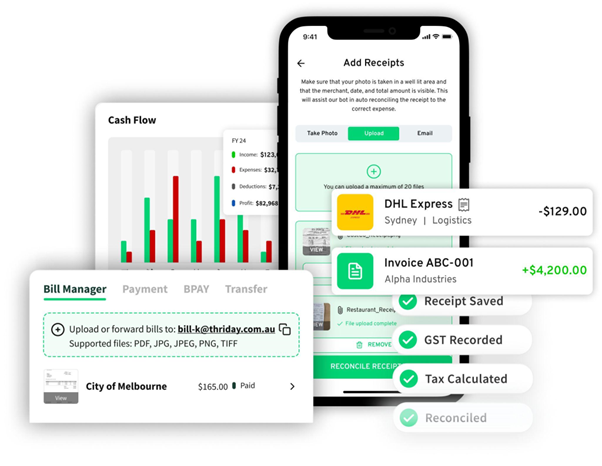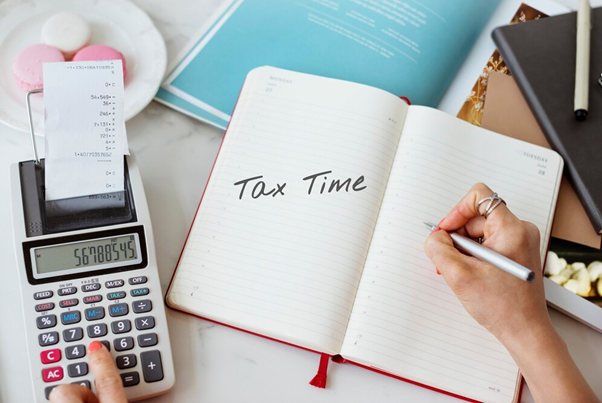Tired of feeling like the ATO is your silent business partner? They take their cut before you even see a profit. It’s time to turn the tables. Learn the insider strategies to legally minimise your tax burden and keep more of your hard-earned cash. This isn’t about bending the rules; it’s about playing the game smarter.
Choose the optimal structure for your business.
It is crucial to pick the right structure for your business in Australia. This decision impacts set-up costs, asset protection, and tax obligations. Here are the main types of business structures to consider.
Sole trader
Operating as an individual trader means the business income is taxed as part of personal income. This is subject to individual tax rates, which can reach up to 45% for top income brackets, in addition to the Medicare levy.
Partner group
In a partner group, two or more people share the business operations. Each partner is responsible for paying tax on their portion of the profits. The business itself is not taxed; only the individuals are taxed based on their earnings from the partnership.
Corporation
A corporation is taxed at a flat rate of 30%, or 25% for base rate entities. This structure sacrifices the tax-free threshold available to individuals and small businesses, meaning every dollar the corporation earns is taxable.
Trust
A beneficiary trust provides flexibility in tax reporting. The trustee can allocate income to beneficiaries who are taxed individually. The income can be distributed strategically to those with lower tax rates, benefiting both the individuals and the arrangement overall. The trust itself does not pay taxes, transferring this responsibility to those who benefit from the trust’s income distribution.
Utilise all available deductions.
In Australia, businesses can lower their taxable income through deductions. These may include expenses related to business travel, purchasing necessary equipment, and asset depreciation. Additionally, only the business portion can be claimed if items such as laptops, mobile phones, or vehicles are used for business and personal reasons. For instance, if a mobile phone is used equally for work and personal reasons, only 50% of its cost can be deducted.
Benefit from a tax offset
Sole traders, partners, or trust beneficiaries involved in a small business with less than $5 million in yearly turnover might qualify for a tax offset of $1,000. This can help reduce the overall tax burden and should be considered as part of strategic tax planning. Leveraging these offsets can be a significant advantage in comprehensive tax strategies.
Write off unpaid debts.
If a debtor does not pay what they owe, and this amount was meant to be part of your income, you might be eligible for a deduction. This situation allows you to reduce your taxable income due to the unrecovered amount.
Boost Super contributions.
Increasing personal before-tax contributions to superannuation can reduce your taxable income. This applies to both employees through salary sacrifice and self-employed individuals, such as sole traders, who can make personal contributions and lodge an intent to claim a deduction. Remember, contribution caps do apply.
Defer income.
To reduce tax liabilities, businesses and individuals can defer income by delaying invoicing until after 30 June. Funds gathered after this date are then taxed in the following financial year, potentially reducing immediate tax obligations and offering flexibility in financial planning.
Pay all employees super by the deadline.
Paying superannuation contributions by 30 June can help ensure that they are deductible. Superannuation guarantees, industrial awards, and salary sacrifice contributions are included.
Tip: Schedule payments a week early to avoid processing delays or administrative issues. Doing so helps keep financial records in order and complies with requirements for claiming deductions.
Consider asset value decline.
Businesses can potentially benefit from claiming deductions when certain assets, such as machinery and work vehicles, decrease in value. Depreciation deductions can be applied when these assets are used for business purposes.
Boost Your Super with personal concessional contributions.
Self-employed individuals can enhance their superannuation by making personal concessional contributions from pre-tax income. This strategy lowers taxable income, offering potential tax savings. Eligible individuals might also benefit from a government co-contribution for further super growth.
Reduce taxable income with property losses.
For those owning rental properties, negative gearing allows them to subtract excess costs from their taxable income. A loss can be claimed when expenses such as mortgage interest are higher than rental earnings. Applying for a PAYG withholding variation might lessen tax withholdings during the year, easing cash flow for individuals anticipating losses.
Give to charities.
Giving money or property to registered charities is a smart way to reduce tax bills. Keep receipts for these donations. The amount given may qualify as a deduction, potentially lowering taxable income and reducing owed taxes.
Get private health insurance.
For those earning over $90,000 individually or $180,000 as a family, not having private health insurance can result in a Medicare levy surcharge of 1-1.5% on total income. Choosing private health insurance can help avoid this extra charge.
Often, the cost of health insurance coverage is less than the surcharge amount. By obtaining coverage, individuals can save money and potentially gain additional healthcare benefits.
Maintain accurate tax documentation.
Keeping precise tax records is vital for any tax-saving strategy. Many approaches rely on having the necessary receipts or other documents. It’s smart to scan and store paper records digitally, possibly using a receipt app for convenience. The ATO mandates retaining documents for five years from when the tax return is filed. This helps ensure easy access and compliance.
Utilise accounting software.
For business owners, handling expenses and tax deductions can be challenging. Using accounting software makes this easier by storing crucial financial details together. It helps in tax management, generating basic reports, and tracking GST. With features like an asset register Thriday has, businesses can simplify depreciation tracking. This leads to improved efficiency and compliance.
Simplify your tax with Thriday.

Choosing effective accounting software like Thriday can simplify preparing taxes for business owners by providing easy access to financial data like income and expenses. Thriday’s advanced features, such as the asset register, automate complex tasks like depreciation tracking, further streamlining the tax preparation process.
By leveraging technology, business owners can focus on their core operations while ensuring compliance and optimising their tax position.
Remember: Tax laws can change. Always seek professional advice for your specific situation to ensure you are compliant and making the most of available opportunities.
Commonly asked questions
How can high earners reduce their taxable income?
High earners have several avenues to minimise their taxable income. Investment in superannuation is a popular method, allowing individuals to benefit from lower tax rates on contributions. Additionally, negatively gearing investment properties can create deductions when expenses exceed income. This can reduce the taxable income effectively.
What steps can employees take to lower their tax liabilities?
Employees can take advantage of work-related deductions for expenses like uniforms, travel costs, and essential tools. Spouse superannuation contributions can also provide tax offsets, further reducing liabilities. Additionally, claiming the deduction for self-education expenses can benefit those pursuing further studies related to their current employment.
How can companies legally decrease their tax obligation for this year?
Companies can use instant asset write-offs on eligible purchases to reduce their taxable income. Another strategy is to apply R&D tax incentives for spending on eligible research and development projects. Moreover, opting for debt financing, which usually comes with tax-deductible interest payments, can be beneficial for lowering the tax owed.
Are there legal risks to using tax reduction methods in Australia?
Employing certain strategies to reduce tax can be legal, but it’s crucial to remain compliant with the Australian Taxation Office (ATO) guidelines. Non-compliance can lead to audits and penalties. Taxpayers need to maintain careful records and ensure that all claims are legitimate and justified.
How does salary sacrifice help in reducing tax payments?
Salary sacrifices in superannuation allow individuals to redirect some of their pre-tax salary into their super fund, which is taxed at a lower rate of 15%. This method lowers taxable income and boosts retirement savings, making it a double benefit for the individual.
What actions could increase the likelihood of an ATO Audit?
Certain indicators may raise red flags for ATO audits. Large and unusual deductions, income discrepancies, or significant deviations from industry financial norms can attract scrutiny. Regularly ensuring that all reported information is accurate and well-documented can help mitigate





